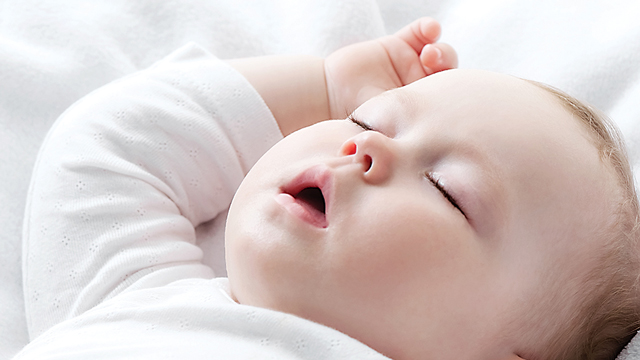Getting your baby to sleep can be a challenge for the modern multi-tasking parent. After working extra hours or taking care of never-ending household chores, laying your baby down to sleep can feel like a triumphant end to a long day. However, other than natural causes, sleep-related death continues to be the leading cause of infant death in Virginia. In nearly every case, these deaths could have been prevented. How can we close the gap to ensure that all Virginia babies are healthy and sleeping safely?
Safe to Sleep
In 1994, the national Back to Sleep campaign was launched to prevent infant sleep-related deaths. In agreement with the American Academy of Pediatrics (AAP), this campaign promoted placing an infant to sleep on her back as the primary prevention strategy. Over the past twenty-five years, additional research and death scene investigations have led to a more detailed understanding of infant sleep-related death. Many environmental factors, including sleep position, are now recognized as having a greater involvement in infant sleep-related deaths than natural disease or genetic anomalies. As a result, in 2012, the Back to Sleep campaign was expanded to become the Safe to Sleep campaign.
Steps to Prevent Tragedy
The Virginia Child Fatality Review Team examined sleep-related infant deaths and found 90 percent of these deaths were preventable. The study also found that well over half of the deaths reviewed were directly related to an unsafe sleep environment. Known risk factors for sleep-related deaths in infants were present throughout the cases reviewed. The top five risk factors identified were: sleeping on a soft surface (73 percent of deaths); exposure to environmental tobacco smoke (71 percent of deaths); co-sleeping or bed-sharing (57 percent of deaths); sleeping on the stomach (51 percent of deaths); and maternal smoking during pregnancy (50 percent of deaths).
The most recent AAP policy statement on safe sleep provides nineteen recommendations for a sleeping environment that can reduce the risk of all sleep-related infant deaths. In addition to babies sleeping on their backs – for naps and at night – consider the following recommendations:
1. Use a firm sleep surface such as a crib, bassinet, portable crib, or play yard that meets safety standards of the Consumer Product Safety Commission.
2. Do not use pillows, heavy blankets, quilts, comforters, or crib bumper pads; instead, use tightly fitted sheets.
3. Do not place an infant alone on an adult bed.
4. Do not leave an infant sleeping in a car seat, stroller, swing, infant carrier, or sling. Move the baby back to a firm sleep surface as soon as possible and place him on his back.
5. Do not place bedding near or covering an infant’s head.
6. Do not place an infant to sleep on a couch or upholstered chair.
7. Do not place an infant to sleep on waterbeds, pullouts, or beanbag chairs.
8. Bed-sharing is not recommended for any babies. Instead of bed-sharing, the AAP proposes room-sharing with an infant on a separate sleep surface within close proximity of the parents until the baby turns one (or at least for the first six months). Close proximity is not only a great way to keep an eye (and ear) on your baby, but it’s also convenient for the mother who is breastfeeding.
Parents and caregivers should make every effort to try to plan a baby’s sleeping environment to avoid your baby accidentally falling asleep on unsafe surfaces.
Don’t feel overwhelmed by all of the information about how to keep your baby safe while sleeping. Understanding the guidelines and warnings will help you make an informed decision that is best for you and your baby.
_____________________________________________________________________
In Virginia, there are numerous resources available to help you make smart choices regarding your baby’s health and sleep safety. For more information:
- Safe sleep, visit www.safesleepVA.com
- Breastfeeding information and/or support www.VDHLiveWell.com/breastfeeding
- Quit NOW Virginia, smoking cessation for pregnant and/or parenting caregivers www.VDHLiveWell.com/tobacco
- Additional resources for pregnant and post-partum women, visit: www.VDHLiveWell.com/women





